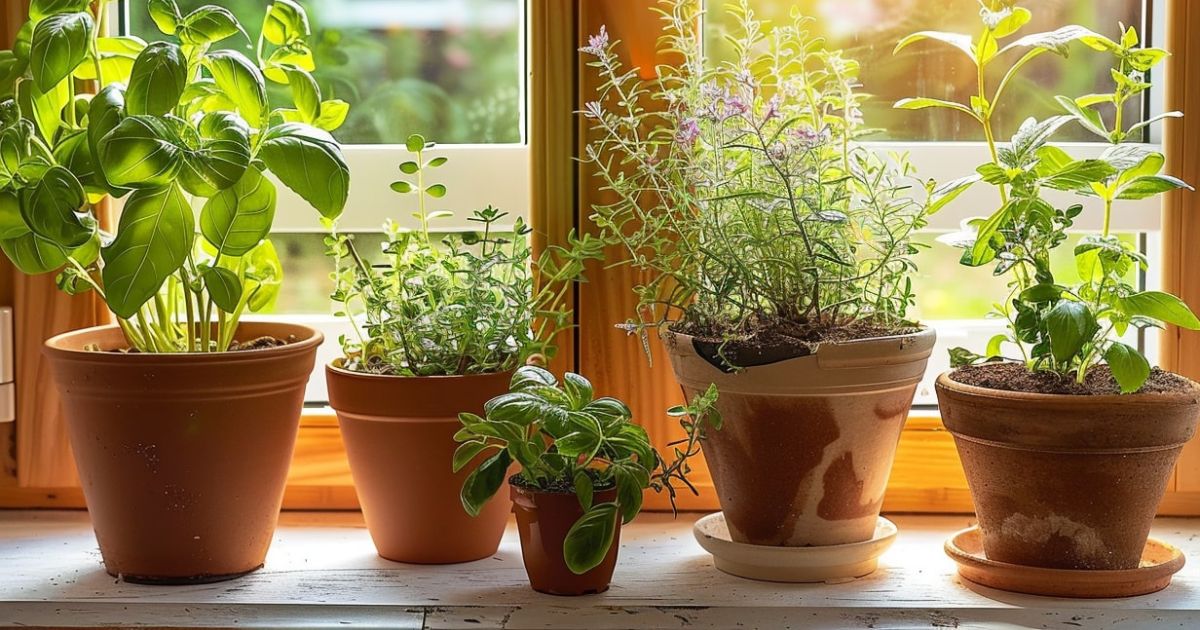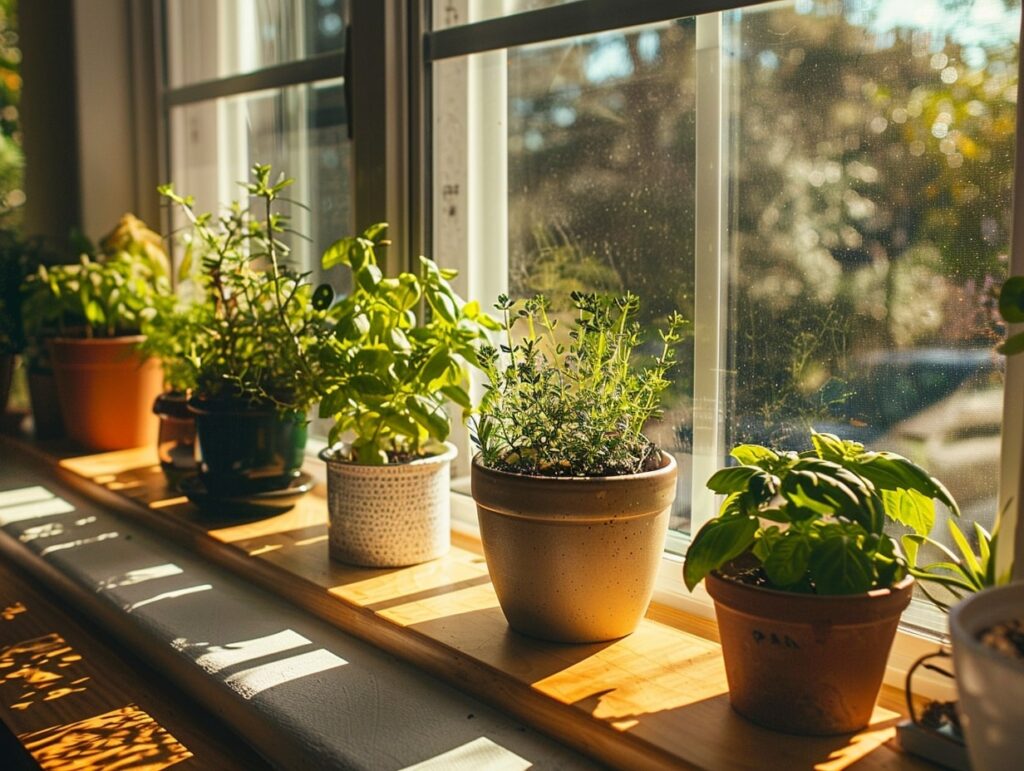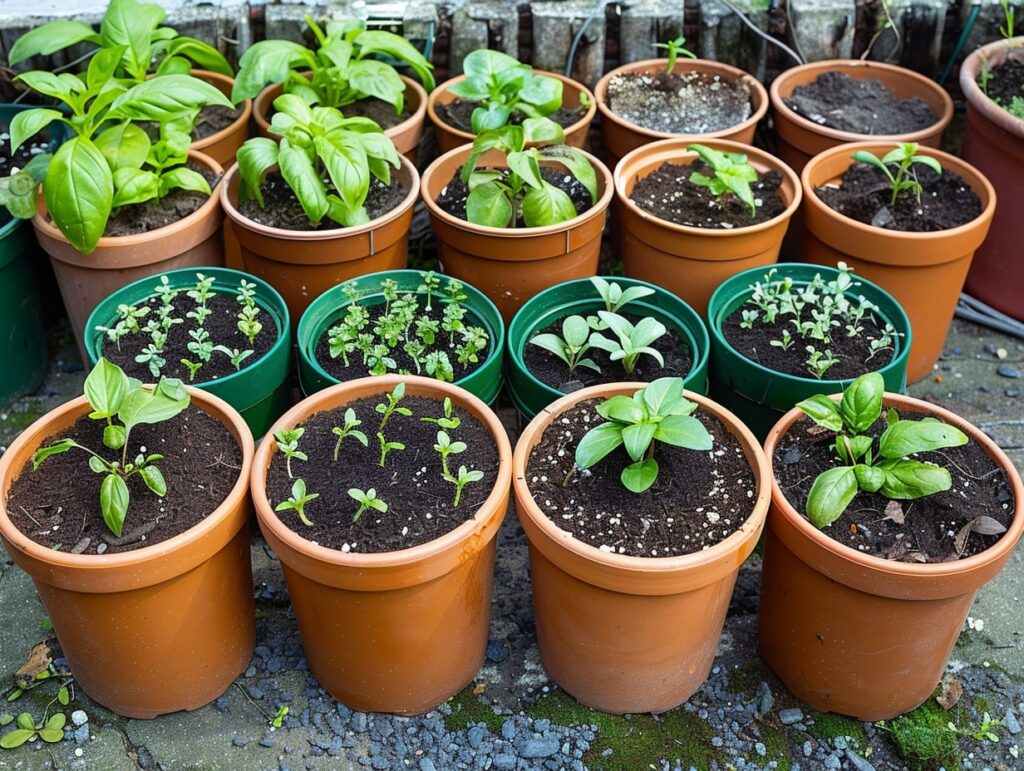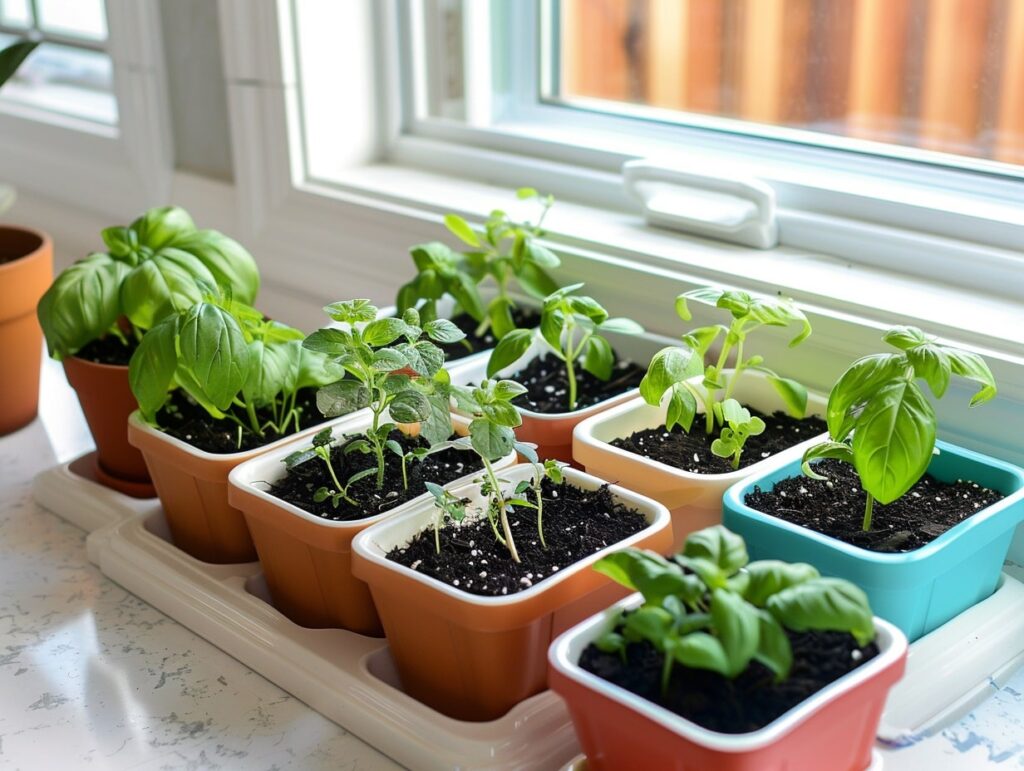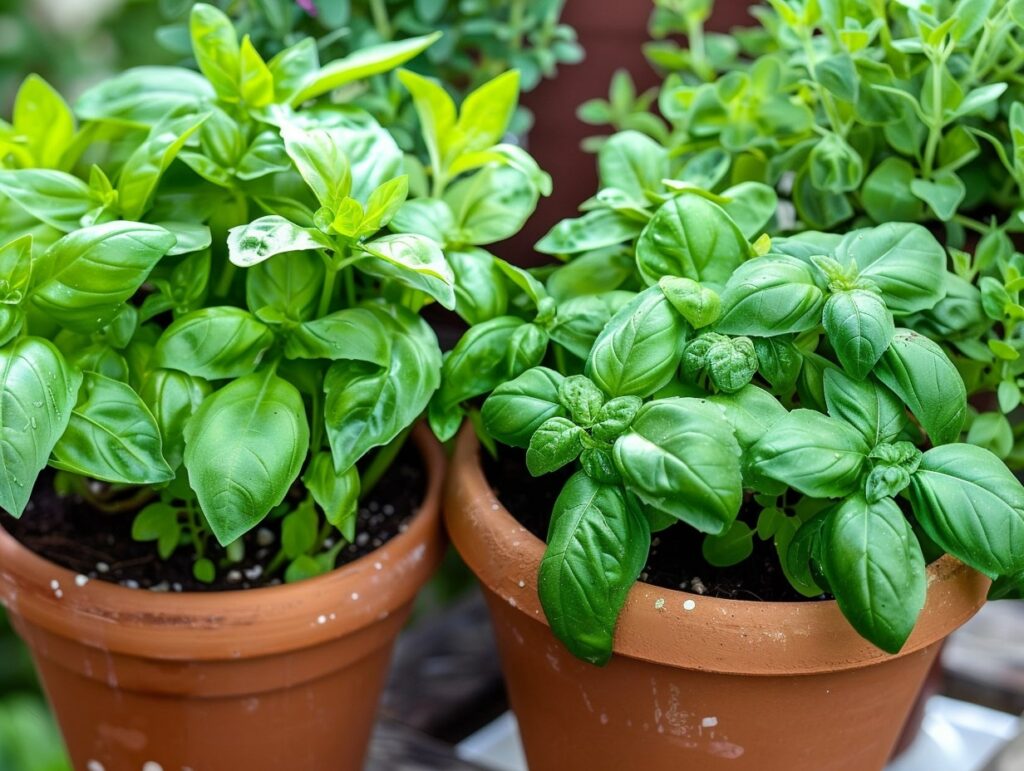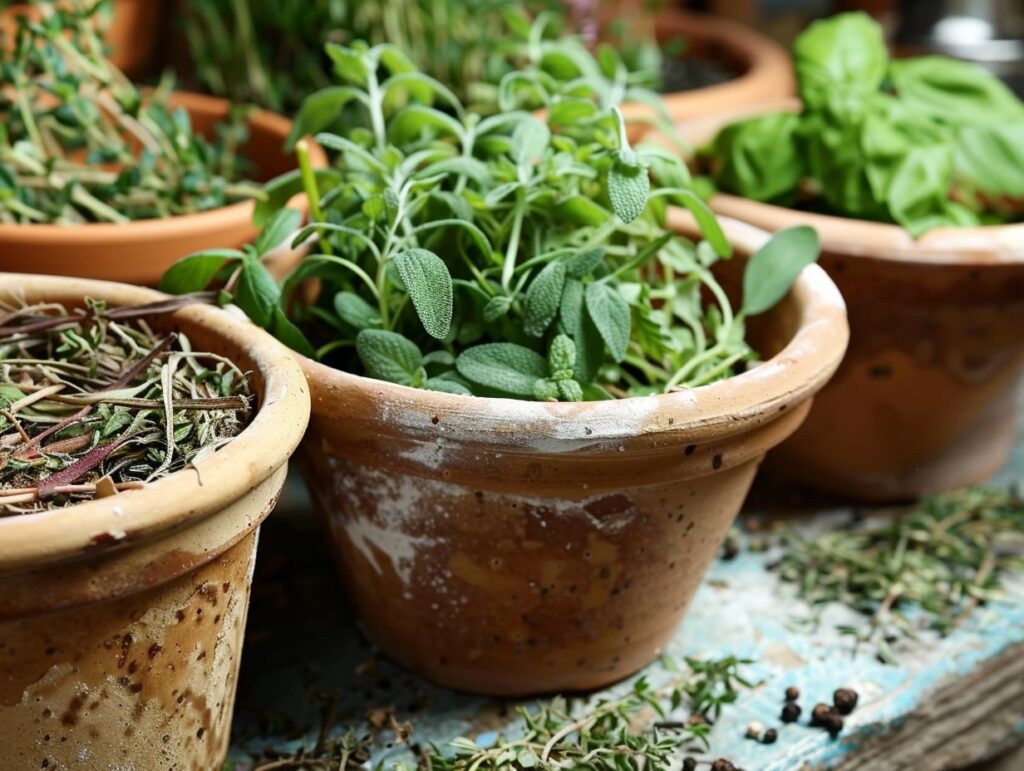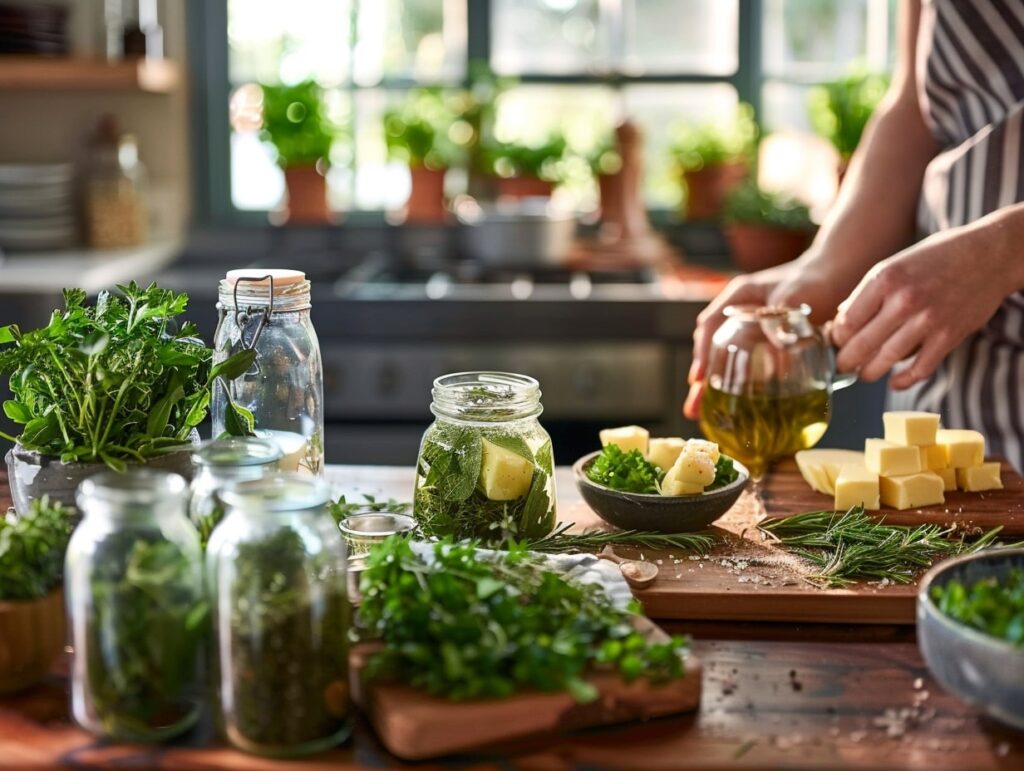Picture this: You’re whipping up a meal and reach over to your kitchen window to snip some fresh basil, rosemary, or mint. Not only does it add a burst of flavor, but the fragrance fills your kitchen with a delightful aroma.
Growing herbs in your kitchen window is a simple pleasure that can bring joy to your cooking and a touch of nature to your living space.
Whether you’re a culinary expert or just love having greenery around, having fresh herbs at your disposal is incredibly rewarding.
Each herb has its unique flavor and health benefits, making your dishes tastier and healthier. Plus, indoor gardening is surprisingly easy, even for those without a green thumb.
All you need is a bit of sunlight, water, and a little attention, and your kitchen windowsill can become a flourishing herb garden. Imagine the satisfaction of nurturing these plants and the convenience of having fresh ingredients always on hand.
Ready to transform your cooking space and meals? Let’s dive into the world of easy-to-grow kitchen window herbs!
Selecting the Right Herbs
Choosing herbs for your kitchen window involves understanding their light needs and the best potting conditions to ensure they thrive. Focus on these aspects to create a successful herb garden indoors.
Understanding Light Requirements
Herbs have varying light requirements. Basil, for example, loves bright, direct sunlight and thrives best with at least 6 hours of sun per day. Parsley and cilantro, on the other hand, prefer partial shade and can tolerate lower light levels.
Mint and chives adapt well to moderate indirect light, making them excellent choices for kitchen windows that don’t receive intense sunlight. Thyme and rosemary need plenty of direct sunlight but can handle some partial shade.
Using a grow light can compensate for insufficient natural light. Position the herbs where they can get maximum exposure to light. Rotate the pots periodically to ensure even growth and prevent the plants from bending towards the light source.
Potting and Soil Preferences
Selecting the right potting soil and containers is crucial. Herbs generally prefer well-draining soil. Basil thrives in a rich, organic soil mix, while rosemary favors a grittier, sandy soil that mimics its Mediterranean origins.
Choose pots with drainage holes to prevent water from accumulating and causing root rot. A layer of small pebbles or broken pottery at the bottom can enhance drainage. For parsley and cilantro, use a loamy soil mix that retains moisture but drains well.
Clay pots allow for better aeration of the soil, while plastic pots retain moisture longer, which might be beneficial for herbs like mint. Ensure the pots are appropriately sized, typically 6-8 inches in diameter, to give the roots enough space to grow.
Setting Up Your Kitchen Window Garden
Start by choosing a window that gets plenty of sunlight. Herbs need about 6 hours of direct sunlight to thrive. South-facing windows are ideal.
Next, select pots with good drainage. Herbs don’t like waterlogged roots. You can use clay pots, plastic containers, or even creative items like teacups!
Fill your pots with high-quality potting soil. This will give your herbs the nutrients they need. Avoid garden soil as it can be too dense for indoor plants.
Here’s a list of essentials you’ll need:
- Pots with drainage holes
- High-quality potting soil
- A small watering can or spray bottle
- Trays or saucers to catch excess water
- Herb seeds or starter plants
When planting, place each herb in its pot, ensuring the roots are covered. Press the soil gently and water lightly.
Placement is crucial. Arrange the pots close to the window, but avoid letting the leaves touch the glass, which can become too hot.
Water your herbs when the top inch of the soil feels dry. Overwatering can be harmful. Always check the soil before adding more water.
You’ll also want to rotate your pots every few days. This ensures all sides of the plant get equal sunlight.
Consider labeling your herbs. This is especially helpful if you’re growing several varieties. You can use small sticks, chalkboard labels, or decorative tags.
Remember, patience is key. Your kitchen window garden will not only provide fresh herbs but add a lovely green touch to your space. Enjoy the process!
Caring for Your Kitchen Herbs
To keep your kitchen herbs healthy and thriving, you’ll need to focus on proper watering, fertilizing, and regular pruning.
Watering Techniques
Proper watering is essential for your herbs. They generally prefer soil that is moist but not waterlogged. Using pots with drainage holes helps prevent root rot.
Check the soil moisture by sticking your finger about an inch deep. Water your herbs when the topsoil feels dry to the touch. During hotter months, herbs might need more frequent watering, while cooler months might require less.
Using a watering can with a fine spout can help control the water flow and avoid splashing.
Fertilizing Basics
Herbs in containers can deplete soil nutrients faster than garden plants. A balanced, water-soluble fertilizer every 4-6 weeks keeps your herbs nourished.
Use a diluted fertilizer to avoid overwhelming the plants. Fish emulsion or seaweed extracts are great organic options. Over-fertilizing can lead to weak, leggy growth, so less is often more.
Pruning and Harvesting Tips
Regular pruning encourages bushier growth and prevents your herbs from becoming leggy. Trim leaves and stems just above a leaf node to promote branching.
Harvesting often lets you enjoy fresh herbs and keeps the plants productive. Focus on cutting no more than one-third of the plant at a time. This allows your herbs to recover and continue growing strong.
Common Challenges and Solutions
Lack of Sunlight
Your kitchen window might not get enough sunlight. Herbs need 4-6 hours of sunlight. Try using a grow light to supplement natural light.
Overwatering
Too much water can rot herb roots. Check soil moisture before watering. Ensure pots have drainage holes.
Pests
Herbs can attract pests like aphids. Prevent this by inspecting plants regularly. Use natural insecticidal soap if needed.
Nutrient Deficiency
Herbs in pots can quickly deplete soil nutrients. Fertilize with a balanced liquid fertilizer every 2-4 weeks.
| Common Issues | Solutions |
|---|---|
| Lack of Sunlight | Use grow lights |
| Overwatering | Check soil moisture and ensure drainage |
| Pests | Inspect regularly, use insecticidal soap |
| Nutrient Deficiency | Fertilize every 2-4 weeks |
Temperature Fluctuations
Extreme heat or cold can stress your herbs. Keep them away from drafty windows or direct heat sources.
Limited Space
Small window sills might limit how many herbs you can grow. Opt for vertical gardens or hanging pots to maximize space.
Leggy Growth
Not enough light can make herbs grow tall and thin. Prune regularly to encourage bushier growth and place them in brighter spots.
Your Consistency
Forgetting to water or tend to your herbs can harm their growth. Set reminders to care for your plants regularly.
Remember to enjoy the process! Your herbs will thank you.
Enjoying Your Harvest
After growing your herbs, it’s time to put them to good use. Not only are they excellent for cooking, but you can also preserve them to enjoy the fresh flavors for a longer period.
Using Fresh Herbs in Cooking
Incorporate herbs like basil, parsley, and cilantro directly into your dishes to add vibrant flavors. For a fresh touch, sprinkle chopped herbs on salads, pastas, and soups.
Herbs like rosemary and thyme work wonders in roasted dishes. Add them whole to meats or vegetables before roasting to infuse a delightful aroma.
Experiment with making herb butter. Mix softened butter with minced herbs such as chives or dill to create a delicious spread for bread or grilled meats.
Preservation Methods
To store herbs for future use, consider drying them. Hang bundles of oregano, thyme, and sage upside down in a warm, dry area. Once dried, crumble the leaves and store in airtight containers.
Freezing herbs is another effective method. Chop herbs like basil and mint and place them in ice cube trays. Cover with olive oil or water and freeze. Use these cubes in soups, stews, and sauces as needed.
For a more intense flavor, create herb-infused oils or vinegars. Submerge fresh herbs in olive oil or vinegar and let sit for a few weeks. Use the infused liquids in dressings or marinades for a burst of taste.
Growing herbs in your kitchen window is a simple yet rewarding way to enhance your cooking and bring a touch of nature indoors. With minimal effort, you can enjoy the convenience of fresh herbs like basil, rosemary, and mint right at your fingertips.
These easy-to-grow plants not only add unique flavors and health benefits to your meals but also infuse your kitchen with delightful aromas.
By providing just a bit of sunlight, water, and care, you can cultivate a thriving herb garden that enriches both your dishes and your living space.
Start your indoor gardening journey today and transform your cooking experience!
